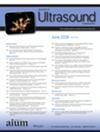Predictive Value of Renal Resistive Index in Occult Hemorrhage in Hemodynamically Stable Polytrauma Patients in Emergency Department
Abstract
Objectives
To find out if renal resistive index (RRI) is altered early in the course of posttraumatic hemorrhage and if it may be a surrogate marker of silent hypoperfusion and, in turn, hemorrhagic shock in polytrauma patients presenting to the emergency department (ED).
Methods
A prospective single-center cross-sectional study was conducted on 195 patients presenting to the ED with hemodynamically stable polytrauma. The patients were evaluated according to the extended-focused assessments with sonography for trauma (e-FAST) protocol and then underwent RRI measurement using Doppler ultrasonography (US). Measurements were performed by an ED physician with a minimum of 4 years' experience in ED practice and USG examination, plus a certification to perform basic and advanced US training. The primary outcome was the development of hemorrhagic shock according to the American College of Surgeons Advanced Trauma Life Support (ATLS) hemorrhagic shock classification. The secondary outcome was the diagnostic performance of RRI in determining occult hemorrhage.
Results
A total of 84 patients (43.1%) developed hemorrhagic shock. There was a significant difference between the RRI levels of the groups with and without hemorrhagic shock (P < .05). While most of the patients with a mean RRI of <0.05 did not develop hemorrhagic shock, to the contrary, patients with a mean RRI of >0.07 mainly developed hemorrhagic shock. When we used the RRI value as a diagnostic test to detect patients who developed hemorrhagic shock, the area under the curve value was 0.832 (P < .001).
Conclusion
RRI can be a promising noninvasive, early marker of silent hemorrhage.

 求助内容:
求助内容: 应助结果提醒方式:
应助结果提醒方式:


